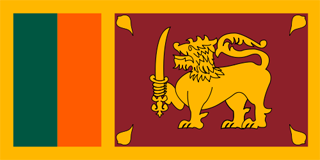Historical ExtractsExtracts taken from “Glimpses of the past”
1 . CHAPTER 41- “RECOGNITION OF MOORS IN NATIONAL SERVICE”.
(Page: 202): from the book “Glimpses of the past of THE MOORS OF SRI LANKA”, published in 1976 by the Moors Islamic Cultural Home.
The following is an extract from an old copper “ Sannas” given by a Sinhalese King in A.D. 1010 to Periya Mudali Maraikar of Beruwela and will be of interest to the reader.
“…….and Great King being glad and in return for anchoring ships at Beruwela; sending them to other countries and improving the village…….. As long as the sons’ an grandsons’ children, descending from Periya Mudali Maraikar live, they are not to perform “Rajakariya” (i.e. service of carrying palanquins for the Government) or to pay money tax. His respectability and dignity are to be maintained always undiminished. On their application they are to build mosques for the performances of their religious duties and they are to be taken care of and any land that they apply for is to be granted to them. He is allowed to carry on trade in any part of the island by shipping cargo………
This was granted by the King on an application made by the Moor trader and according to historical evidence the application referred to was known as “Sempotha Pathiram”
—- By Order of His Excellency the Governor G.O. Seymour.
2 . FROM THE ARTICLE – “Sinhalese Embassy in Egypt in the 13th Century”- By Kenneth J. Somanader – Ceylon Observer, August 18, 1956.
(From the book “Glimpses from the Past of THE MOORS OF SRI LANKA)
ARRIVAL OF MOORS IN SRI LANKA:
The rule of Bhuvaneka Bahu I, was eventful. “The Tripitakas were written by learned monks, and Pali Scripture spread throughout the land. And the first Moors are said to have arrived in Ceylon during the eighth year of the King’s reign – around 1280 A.D.”
3 . FROM THE ARTICLE – “The Ceylon Moors can be proud of their history” – By Cyrus D. F. Abeyakoon- Ceylon Observer, July 19,1942
( From the book “ Glimpses from the Past of THE MOORS OF SRI LANKA)
MOOR KING:
“The Kurunegala Vistaraya’ ,relates that Vastu-Himi was the son of Bhuveneka Bahu I (A.D. 1272-1283), through his second queen (“ Yakada- Doliya”), an aristocratic Moor lady of Madaketiya, a village close to Kurunegala Town”.
“The Mahavamsa describes him as a ruler who desired to gain merit by works of charity and although he professed the Islamic faith, he dutifully supplied alms daily to thousands of Buddhist Priests”.
4 . FROM THE ARTICLE – “The Fight for the Fez”- By M.M. Thawfeeq
( From the book “Glimpses from the Past of THE MOORS OF SRI LANKA)
THE FEZ:
“The victory gained by the mass meeting of ‘The Mohamedans of Ceylon’ held at the Maradana Mosque grounds Colombo on December 31, 1905 should also serve as a lesson to the present day Muslims of what could be achieved by unity”
“The Fez became the ‘national’ headgear, being worn to mosques, shops, weddings and other functions, in fact on every occasion when the Muslim had need to leave his home”
5. FROM THE ARTICLE – “Malays were in Ceylon before recorded history”- By Paulinus Tambimuttu – Ceylon Daily News, November 13,1965
( From the book “Glimpses from the Past of the MOORS OF SRI LANKA)
PRESENCE OF MALAYS:
“ Dr S. Paranavitana has stated in his Paper ‘Ceylon and Malayasia in Mediaeval Times’ published in the Journal of Royal Asiatic Society that the people of Ceylon and Malays were in contact with each other from very ancient times. I have adduced further evidence to prove that the Malays were in Ceylon before recorded history in the Journal of the Royal Asiatic Soceity( C.B) Volume VII Page 257”.
NOTE – I am thankful to my grandson M. Aqeel Fouzi for lending me the book “ Glimpses from the Past of The MOORS OF SRI LANKA”, from his Home Library.

